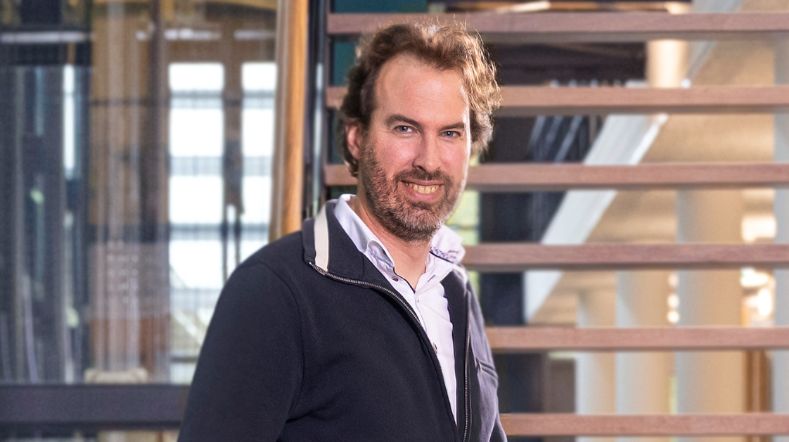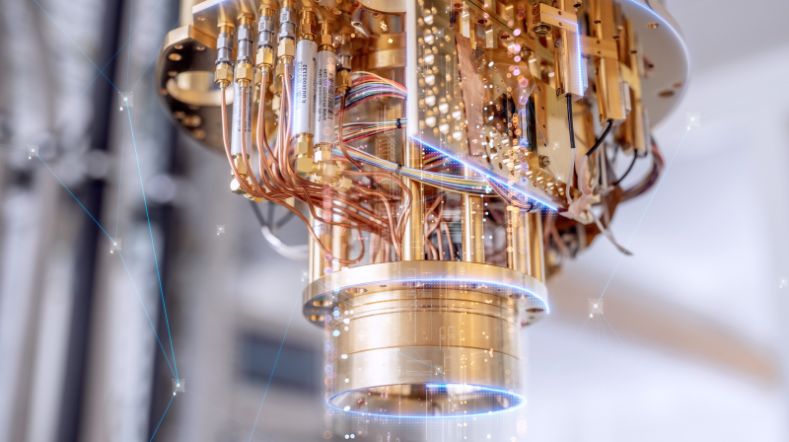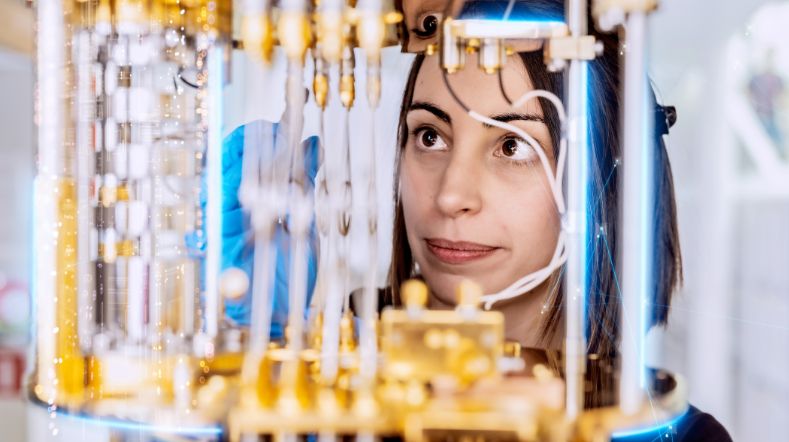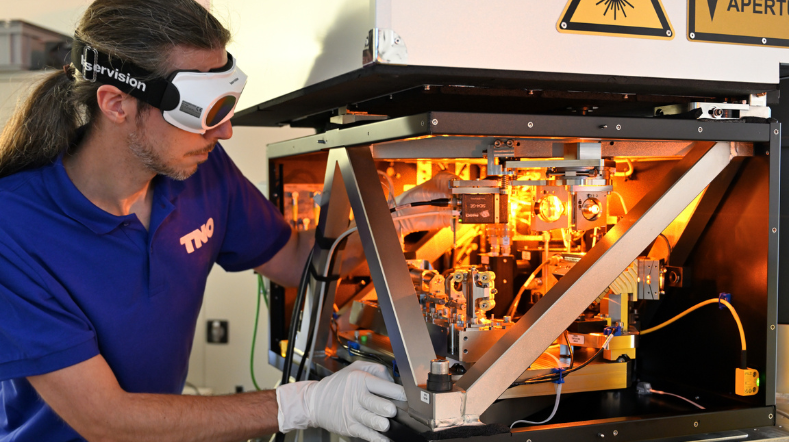
Photonic Integrated Circuits
The basic technology behind Photonic Integrated Circuits (PIC) has been known for decades. But today, the power and potential of PIC technology is emerging as a possible solution for our modern data collection, transfer, and processing needs. TNO innovates together with a number of industries, and is developing PIC solutions that solve key technological challenges.
The power of photons
In PICs, photons are used instead of electrons to transfer and process information on a microchip. Optical waveguides and miniature optical components are combined on a PIC chip, in place of – or in addition to – electrically conductive tracks and electrical components. Compared to current electronic chips, photons can dramatically increase the speed of information transfer and processing. They also reduce energy consumption.
No wonder, that the first industries to explore the possibilities of PIC technology have been data and telecom. But beyond established data and telecom systems, PIC chips are now being investigated and used for innovations in satellite and quantum communication and in sensing systems. For all of these, alongside performance advantages, the robustness, small size, manufacturability, and scalability of PICs bring additional benefits.
Optimising PIC chip performance and manufacturability
Building the most robust, powerful, reliable, and fit-for-purpose PIC chips that are ready for transfer to industry requires a wide range of expertise and a commitment to this exciting and emerging technology. TNO’s Thin-Film electronics and Hybrid & printed electronics research groups work towards advancements in state-of-the art chip production. We focus on developments in PIC chip design and manufacturability, as well as on PIC integration and packaging solutions. This work is done in partnership with the joint innovation centres PITC and CITC.
Widespread application
TNO uses its expertise in optics, optomechatronics, acoustics and quantum technologies to create and test novel optical hardware system designs and prototypes for a wide range of applications. These include satellites, equipment for the semiconductor industry, sensors, and medical devices. We have identified several opportunities to use PICs as a key component in optical systems, in order to surpass the performance that can be achieved using conventional technologies.
We are preparing to support the industrial uptake of these new system architectures. Our close cooperations within PITC and CITC, as well as with other research organisations, and PIC foundries with various PIC material platforms, ensures that the innovative PIC chips that are needed for these novel optical systems can be developed, tested, and validated in instrument prototypes.
Collaboration for acceleration
TNO actively contributes to a number of national and international initiatives aiming to accelerate the development and uptake of PIC technology and to support the creation of new value chains. For example, we are an active member of PhotonDelta, a cross-border ecosystem of experts in photonic chip technologies. We also contribute to the development of PIC technology as part of Dutch growth fund programs PhotonDelta and NXTGEN HighTech. In addition, we are active participants in MedIPUT, which is developing highly sensitive ultrasound transducer arrays using integrated photonics.
Join the evolution
PIC technology has the power to create true step-change advancements in a wide range of industries. As we explore, optimise, and apply this revolutionary technology, we are eager to partner with organisations and academics as enthusiastic about the possibilities as we are. Want to know more? Contact TNO today.
Time setter story: Boudewijn Docter


Pioneering with a purpose: The Netherlands at the forefront of quantum innovation


Pioneering on the edge of physics: quantum chips tested faster and faster


How TNO’s Ines Corveira Rodrigues shapes tomorrow's quantum world


Optics



